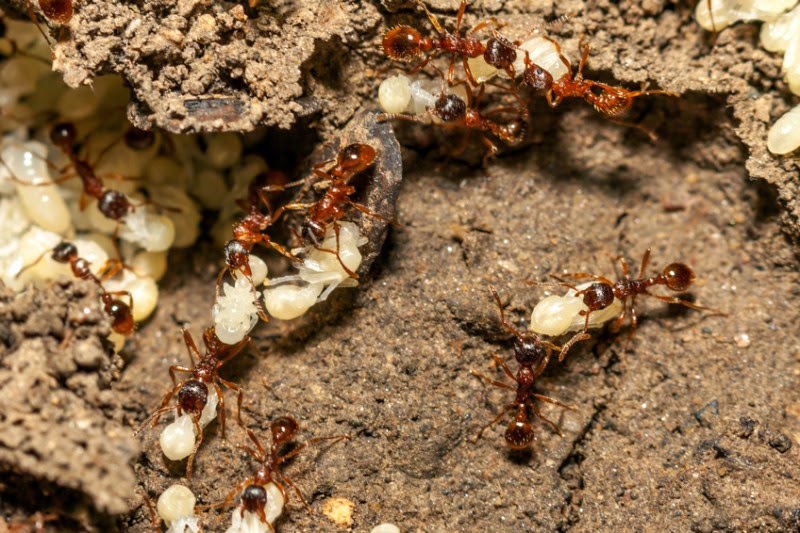
A 25-year-long study published in Geology on 14 July provides the first quantitative measurement of in situ calcium-magnesium silicate mineral dissolution by ants, termites, tree roots, and bare ground. This study reveals that ants are one of the most powerful biological agents of mineral decay yet observed. It may be that an understanding of the geobiology of ant-mineral interactions might offer a line of research on how to “geoengineer” accelerated CO2 consumption by Ca-Mg silicates.
Researcher Ronald Dorn of Arizona State University writes that over geological timescales, the dissolution of calcium (Ca) and magnesium (Mg) bearing silicates has led to the graduate drawdown of atmospheric carbon dioxide (CO2) through the accumulation of limestone and dolomite. Many contemporary efforts to sequester CO2 involve burial, with some negative environmental consequences.
Dorn suggests that, given that ant nests as a whole enhance abiotic rates of Ca-Mg dissolution by two orders of magnitude (via biologically enhanced weathering), future research leading to the isolation of ant-based enhancement process could lead to further acceleration. If ant-based enhancement could reach 100 times or greater, he writes, this process might be able to geo-engineer sequestration of CO2 from the atmosphere. Similarly, ants might also provide clues on geoengineering efficient pathways of calcium carbonate precipitation to sequester atmospheric CO2.
Earth’s climate has cooled significantly over the past 65 m.y., likely from hydrologic regulation, vegetation change, and interactions related to tectonism, in part mediated by Ca-Mg silicate mineral dissolution that draws down CO2. Although speculative, says Dorn, the timing of the expansion in the variety and number of ants in the Paleogene and the Neogene suggests that biologically enhanced weathering by ants could potentially be a part of the puzzle of Cenozoic cooling.
Journal Reference:
R. I. Dorn. Ants as a powerful biotic agent of olivine and plagioclase dissolution. Geology, 2014; DOI: 10.1130/G35825.1
Note : The above story is based on materials provided by Geological Society of America.










